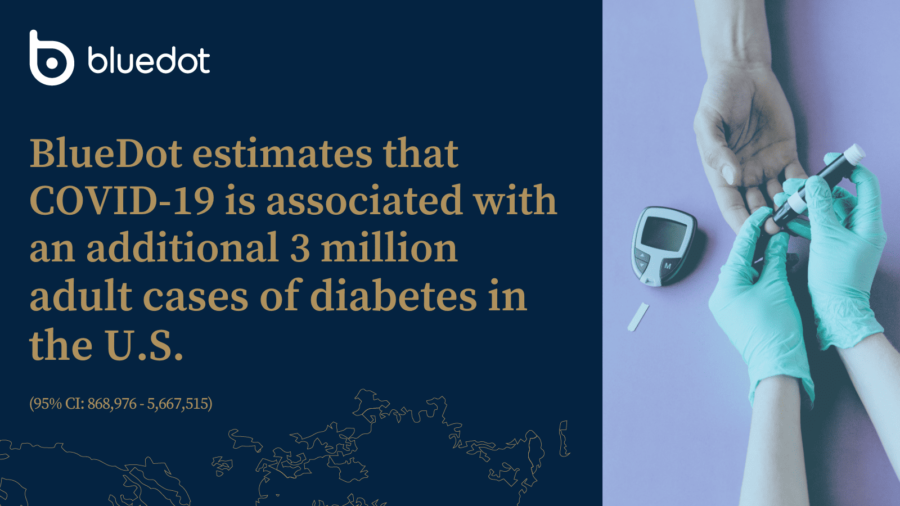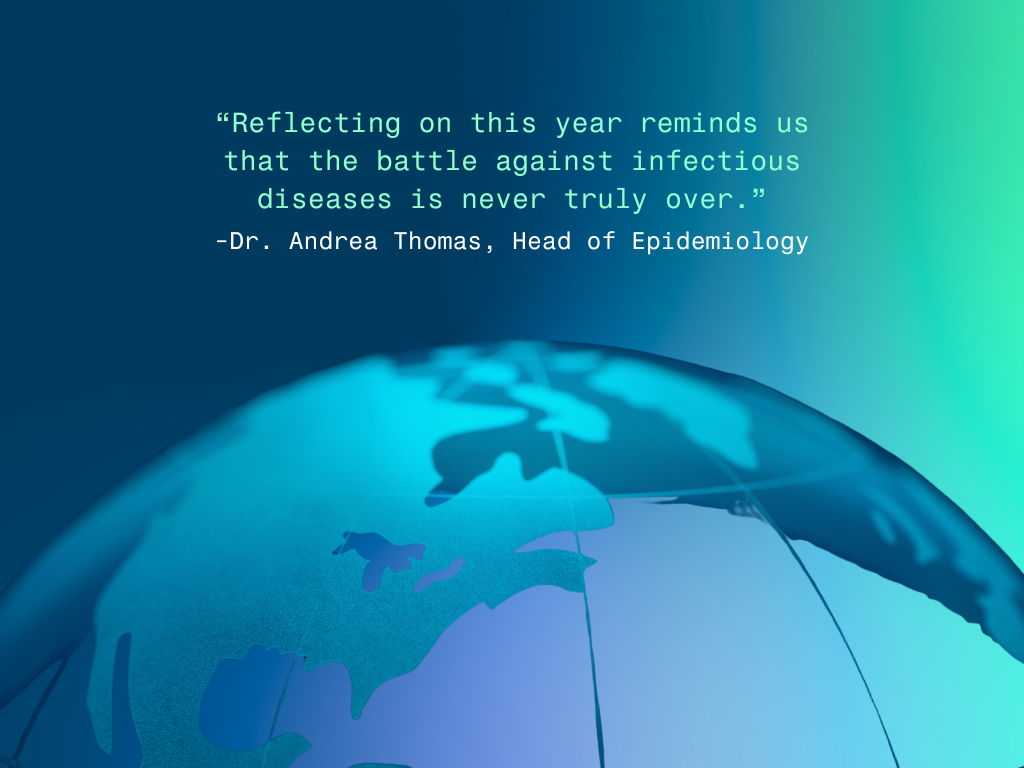Diabetes emerges as a disturbing addition to the global burden
While the World Health Organization may have lifted the global emergency status for COVID-19, the threat it poses remains ever-present, and its true repercussions are still unfolding before us. As the world is now well into the third year of the pandemic, a substantial proportion of the global population has experienced SARS-CoV-2 infections. And with time, awareness and understanding of how post-acute COVID-19 residual effects manifest and the long-term health consequences slowly emerge. Among these lasting effects lies a concerning intersection between COVID-19 and various chronic diseases.

To better understand one aspect of the burden, in BlueDot’s most recent ILI Pulse report, our expert epidemiology team calculated that an estimated 3 million excess cases of diabetes may be associated with reported adult cases of COVID-19 in the U.S. that have arisen since the country detected its first case. This eye-opening finding has far-reaching implications, particularly when it comes to healthcare expenditure. As a result, we’ve estimated that at least an additional $35.8B USD (95% CI: ~$10.6 billion – ~$68.6 billion) in annual direct healthcare expenditure for diabetes may be incurred by these individuals. These numbers shed light on an alarming reality, underscoring the urgent need for further investigation and targeted interventions to anticipate and mitigate the profound impact of COVID-19.
Associated peer-reviewed studies
While studies are continuing to be published, two recent peer-reviewed papers were recently published and highlight the association between COVID-19 and diabetes.
- Association of COVID-19 infection with incident diabetes:
A large retrospective cohort study by Naveed et al. compared the risk of incident diabetes among adults who had a positive SARS-CoV-2 test compared to matched controls who had a negative SARS-CoV-2 test in British Columbia, Canada. - Associations between SARS-CoV-2 infection and the incidence of new chronic condition diagnoses:
A systematic review/meta-analysis by Gaudet et al. estimated the risk and excess case rate of various new chronic condition diagnoses among different age groups from studies conducted in high-income OECD countries.
What this means
While further research and long-term impacts of COVID-19 are still to emerge, this is one of many examples of how the humanistic and economic burden of COVID-19 extends beyond the acute SARS-CoV-2 infection. Quantifying this additional burden is critical to aid decisions such as public health policies and investments in treatments and countermeasures. Overall, this serves as a reminder that the impacts of COVID-19 will be felt long after its status as a global emergency ceases.
To view BlueDot’s critical appraisal of these studies, or learn more about how we calculated the results, please contact us to book a consultation.









